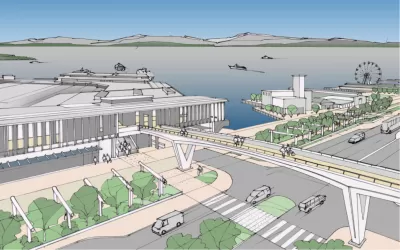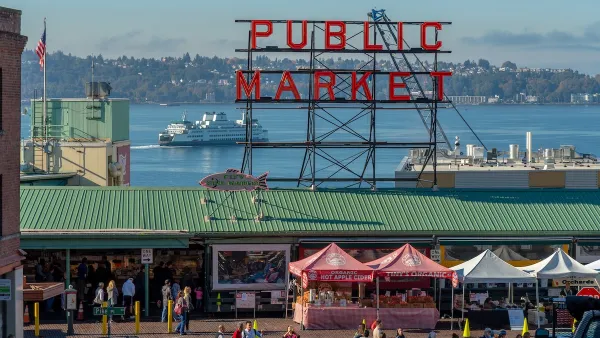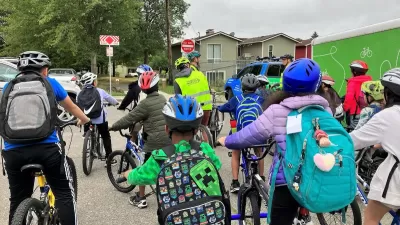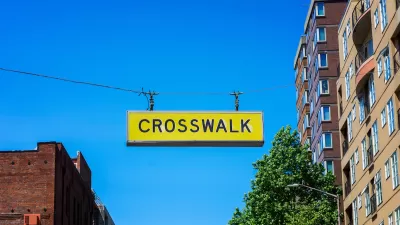The Marion Street and Union Street bridges showcase two vastly different designs for improving pedestrian access.

Ryan Packer reports on two pedestrian bridges that will improve pedestrian access to Seattle's waterfront. "The more significant of these new pedestrian bridges will be the new Marion Street bridge connecting to the new Washington State Ferries terminal at Colman Dock. Currently there is a temporary pedestrian bridge over Alaskan Way at Columbia Street for ferry passengers, which connects to a remaining segment of the old pedestrian bridge at Marion and Western Avenue." The city plans to completely replace and widen the bridge, "but that path to doing that remains opaque. The Seattle Design Commission, reviewing the project in early 2019, expressed concern about constructing the project in two phases, raising the possibility that the second phase would drop in priority once the first phase was completed." The bridge "is expected to start construction near the start of 2022 and open in early-to-mid 2023."
The second pedestrian bridge, writes Packer, is less a bridge than a pathway, "replacing the old and awkward stairway that was the only way to get between Alaskan Way and Western Avenue at Union Street. That connection wasn’t accessible, but the new Union Street bridge will include a new elevator, perhaps its biggest benefit."
And then there’s The Bench. At the spot where the pedestrian bridge path at the top of the bridge meets Western Avenue, there is to be installed an unusual "lean wall." Part hostile architecture, part bollard (preventing wayward drivers from turning from Western onto the walkway), part pedestrian diverter (forcing people walking to go to the crosswalks on either side), the bench is ultimately sidewalk level sculpture representing all of those things. Ultimately, this geometric form subbing in for a real bench should not exist, but soon it will.
Packer's article includes details about each project as well as renderings and diagrams showing the improved access.
FULL STORY: Two Very Different Pedestrian Bridges Coming to the Seattle Waterfront

Maui's Vacation Rental Debate Turns Ugly
Verbal attacks, misinformation campaigns and fistfights plague a high-stakes debate to convert thousands of vacation rentals into long-term housing.

Planetizen Federal Action Tracker
A weekly monitor of how Trump’s orders and actions are impacting planners and planning in America.

San Francisco Suspends Traffic Calming Amidst Record Deaths
Citing “a challenging fiscal landscape,” the city will cease the program on the heels of 42 traffic deaths, including 24 pedestrians.

Defunct Pittsburgh Power Plant to Become Residential Tower
A decommissioned steam heat plant will be redeveloped into almost 100 affordable housing units.

Trump Prompts Restructuring of Transportation Research Board in “Unprecedented Overreach”
The TRB has eliminated more than half of its committees including those focused on climate, equity, and cities.

Amtrak Rolls Out New Orleans to Alabama “Mardi Gras” Train
The new service will operate morning and evening departures between Mobile and New Orleans.
Urban Design for Planners 1: Software Tools
This six-course series explores essential urban design concepts using open source software and equips planners with the tools they need to participate fully in the urban design process.
Planning for Universal Design
Learn the tools for implementing Universal Design in planning regulations.
Heyer Gruel & Associates PA
JM Goldson LLC
Custer County Colorado
City of Camden Redevelopment Agency
City of Astoria
Transportation Research & Education Center (TREC) at Portland State University
Jefferson Parish Government
Camden Redevelopment Agency
City of Claremont





























